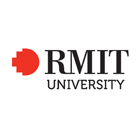Master of Engineering (Telecommunication and Network Engineering)
- Home
- Courses
- RMIT University (Royal Melbourne Institute of Technology University)
- Master of Engineering (Telecommunication and Network Engineering)
Master of Engineering (Telecommunication and Network Engineering)
Enhance your career prospects by gaining expertise in the fast-moving world of Internet-of-Things networks, telecommunication and network engineering. You’ll develop your knowledge and skills in the analysis, design, implementation and operation of Internet-of-Things networks, telecommunication systems/devices, and networks architecture, applications and services. Enhance your professional skills in research by undertaking…
Categories
COURSE DESCRIPTION
Enhance your career prospects by gaining expertise in the fast-moving world of Internet-of-Things networks, telecommunication and network engineering.
You’ll develop your knowledge and skills in the analysis, design, implementation and operation of Internet-of-Things networks, telecommunication systems/devices, and networks architecture, applications and services. Enhance your professional skills in research by undertaking a major research project in your final year and learn new transferrable skills that you can use in a range of different industries.
You’ll study a range of topics including:
Internet-of-Things (IoT) networks: gain a specialized knowledge in designing, building and operating IoT networks. IoT is a key technology for enabling smarter cities, better transport, connected factories, self-driving cars and smarter agriculture
Internet applications, management and security: From enterprise networks to cloud computing, will gain indispensable skills in in designing, building and operating networks and applications with emphasis on network security. You will master key skills in software defined networks
Telecommunications: whether wireless or wired, you will grasp the fundamentals of current wireless technologies, next generation 5G, optical fiber networks and satellite communication systems
Career
Our graduates can establish their own businesses or undertake further studies such as the PhD. You will be equipped to work in leadership roles in telecommunication and network industries.
Rapid developments in global telecommunication and network technologies present exciting career opportunities for graduates of this program, with enhanced prospects in industries such as:
Telecommunication operators
Internet-of-Things network operators, providers and users
Internet service providers
Wireless/Wired Network consultants and contractors
Network security providers
Satellite and space industry
Network applications consultants and developers
Communication devices research and development industry
Defence research and development
Mining industry
EDUCATIONAL INSTITUTION
Since its establishment in 1887, Royal Melbourne Institute of Technology University (RMIT) has been meeting the needs of the community surrounding it. Originally a Working Men’s College, RMIT showed its flexibility during World War Two, training over 20,000 servicemen in communications to help with the war effort.Now, it is a true pioneer in international education, championing cross-border study opportunities with campuses in various countries. Granted formal university status in 1992, RMIT is ranked 21st in the world for universities that are less than 50 years old.RMIT is the largest higher education institution in Australia, currently with more than 82,000 students. With nearly 20% of those students coming from overseas, it is a university that truly welcomes diversity and is a melting pot of different cultures. RMIT has three campuses in Vietnam, a European hub in Barcelona, an office in Indonesia, and partners with 200+ institutions in 42 countries to provide study opportunities worldwide.
Do you want to Apply to:
Master of Engineering (Telecommunication and Network Engineering)
Add Your Heading Text Here
Please, login or Register to Apply!
Do you need extra info about:
Master of Engineering (Telecommunication and Network Engineering)?
Since its establishment in 1887, Royal Melbourne Institute of Technology University (RMIT) has been meeting the needs of the community surrounding it. Originally a Working Men’s College, RMIT showed its flexibility during World War Two, training over 20,000 servicemen in communications to help with the war effort.
Now, it is a true pioneer in international education, championing cross-border study opportunities with campuses in various countries. Granted formal university status in 1992, RMIT is ranked 21st in the world for universities that are less than 50 years old.
RMIT is the largest higher education institution in Australia, currently with more than 82,000 students. With nearly 20% of those students coming from overseas, it is a university that truly welcomes diversity and is a melting pot of different cultures. RMIT has three campuses in Vietnam, a European hub in Barcelona, an office in Indonesia, and partners with 200+ institutions in 42 countries to provide study opportunities worldwide.




